
Welcome to our Year in Review! We invite you to check out the research
people, programs
and facilities that
really made UD shine during the past year. May our "stars" continue to light discovery’s path.
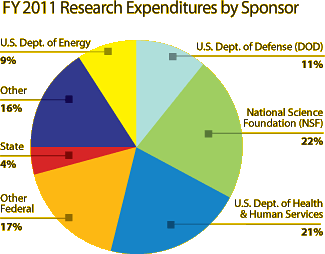
The Carnegie Foundation for the Advancement of Teaching classifies UD as a research university with very high activity — a designation accorded less than 3 percent of U.S. universities. UD ranks in the nation's top 100 universities in federal obligations for science and engineering.
During the past fiscal year, UD's contract and grant funding topped $196 million, more than double the sponsored expenditures of a decade ago.
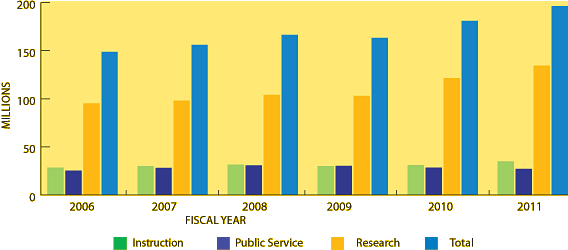
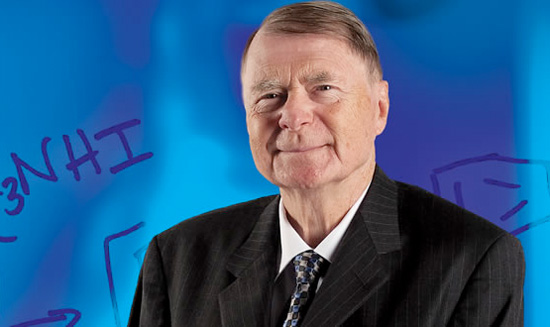
On Dec. 10, 2010, at the age of 79, Richard F. Heck, the Willis F. Harrington Professor Emeritus at UD, was awarded the Nobel Prize in Chemistry for "palladium cross couplings in organic synthesis" alongside Ei-ichi Negishi from Purdue and Akira Suzuki from Hokkaido University. Heck's path to chemistry was through the front yard. His parents put the teenage Heck in charge of landscaping the family's new home on a barren lot in California, which spurred his interest in plant fertilizers — and chemistry. Today, the "Heck Reaction" is essential to the production of pharmaceuticals, not to mention sunscreen and the screens of next-generation cell phones and TVs. Heck was honored on May 26, 2011, with a major symposium and the proclamation of "Richard Heck Day" on campus. He retired from UD in 1989 and today enjoys growing orchids at his home in the Philippines.
Among universities without a medical school, UD is now in the top 20 percent in licensing income and also ranks among the top 25 percent in patents issued, according to the Association of University Technology Transfer Managers. At the second annual Inventors Reception, co-sponsored by the University's Office of Economic Innovation and Partnerships (OEIP) and the law firm RatnerPrestia, 170 faculty and staff were recognized as inventors on UD patents. David S. Weir, OEIP director, noted that an important component of the University's Path to Prominence™ is the creation of a culture in which invention, innovation and entrepreneurship are valued and supported. Although OEIP is early in the development of "this innovation system," Weir said, "some promising signs are appearing, and an increasing number of our research community is taking advantage of this process and infrastructure."
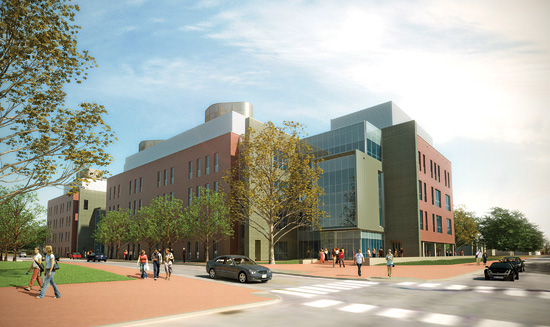
Scheduled for completion in 2013, the 194,000-square-foot Interdisciplinary Science and Engineering Laboratory (ISE-Lab) will be a place where teaching and research are integrated, with the research providing content for the curriculum. Students will learn fundamental scientific principles in newly structured courses encompassing biology, chemistry, and physics and then apply those principles to solve real-world problems in areas such as renewable energy. The building will house the University of Delaware Energy Institute, the Center for Energy and Environmental Policy, the Delaware Environmental Institute and the Catalysis Center for Energy Innovation. Find out how you can be part of the vision at www.udel.edu/iselab/.
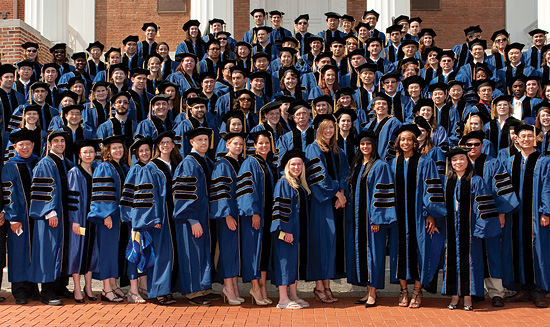
The National Research Council ranked UD's doctoral programs in biomechanics and movement science, chemical engineering, linguistics and cognitive science, materials science and engineering, and mathematics among the top in their fields overall. In the category of student support/outcomes, which includes such aspects as financial aid, UD's doctoral programs in chemical engineering, English, human development and family studies, oceanography, plant and soil sciences, political science and international relations, and urban affairs and public policy stood in the top tier. In diversity of the academic environment, which considered percentages of female, minority, or international faculty and students, UD's doctoral programs in animal science, art history, biological sciences, linguistics and cognitive science, oceanography, political science and international relations, and urban affairs and public policy won high marks.

UD's wind turbine at the Hugh R. Sharp Campus in Lewes produced 5.1 million kilowatt hours (kwh) of energy during its first year of operation. That was enough to power the seaside campus, with a surplus of 1.3 million kwh — sufficient for about 120 homes — sent to the Lewes Board of Public Works for use by the city's homeowners. The turbine serves as a platform for research, including a study that looks at its impact on area birds and bats, a corrosion study to assess how the salty coastal air affects the machine, and a project investigating wear and tear on its drive train. Such research is building the U.S. knowledge base on the viability, cost-efficiency and impacts of wind energy. Plus, UD and the National Renewable Energy Laboratory are working toward testing commercial wind turbines off the Delaware coast. A test site in Delaware could mean significant jobs in wind-energy manufacturing and engineering.
Two new centers at UD serve as critical components of the Delaware Health Sciences Alliance (DHSA), which includes Christiana Care Health System, Alfred I. duPont Hospital for Children, Philadelphia's Thomas Jefferson University and UD as major partners in improving health care for Delawareans. The Delaware Cardiovascular Research Center focuses on the prevention and treatment of heart disease — a killer responsible for more than one-third of U.S. deaths. Ulhas Naik, professor of biological sciences, directs the center, which initially is being housed at the Delaware Biotechnology Institute, with plans for a future home at UD's Science and Technology Campus. The Delaware Rehabilitation Institute, under the direction of Thomas Buchanan, George W. Laird Professor of Mechanical Engineering, brings together academic and clinical scientists and clinicians to find innovative ways to help people of all ages recover from injury and disease and improve the state of the art in rehabilitation medicine.
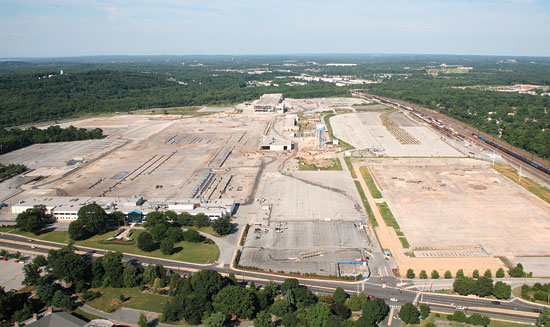
The former Chrysler auto assembly plant in Newark, Del., is being transformed into a new UD campus focusing on energy and the environment, life and health sciences, and national security and defense. Demolition is expected to be completed by the end of 2011; approximately 85% of the materials from the site have been recycled. Bloom Energy has announced plans to build a high-tech manufacturing hub at the site, employing as many as 1,500 workers manufacturing fuel cells known as "Bloom Boxes," which are helping to power major companies such as Google, FedEx, Coca-Cola, WalMart and AT&T Inc. Learn more at www.udel.edu/scitechsite/.
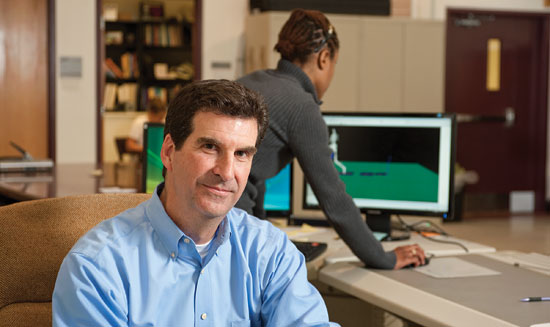

"Our goal is to see every wounded warrior living a full and engaging life," says Steven Stanhope (above), professor in UD's Department of Kinesiology and Applied Physiology, of the new BADER Consortium, which won a five-year, $19.5 million grant from the Department of Defense to improve orthopedic rehabilitation for soldiers with musculoskeletal injuries. The consortium's name, the acronym for "Bridging Advanced Developments for Exceptional Rehabilitation," is inspired by Sir Douglas Bader, a Royal Air Force fighter pilot who lost both legs in a plane crash, but went on to valiant service during World War II. Partners include Spaulding/Harvard Rehabilitation Hospital, the University of Texas at Austin, the Mayo Clinic, Naval Medical Centers in San Diego and Portsmouth, Va., the San Antonio Military Medical Center, and Walter Reed Army Medical Center.
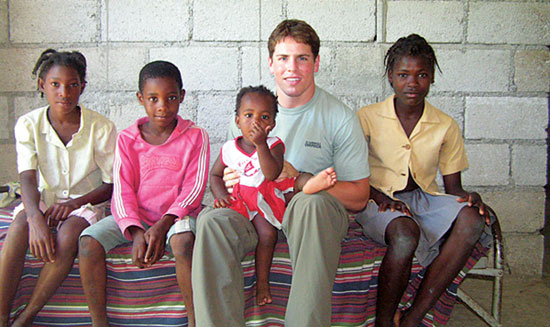
Among UD's many high-achieving students, Matthew Watters (above with friends from Haiti), from Ramsey, N.J., who graduated with a bachelor's degree in neuroscience and a minor in political science, became the 12th Rhodes Scholar in UD history. He is now working on a master's degree in development studies at Oxford University, with plans to attend medical school and pursue a career in health policy. He founded Students for Haiti, which raised more than $60,000 to help rebuild a hospital in Villa destroyed by the 2010 earthquake. And Megan Pell, a doctoral student in the special education program, was one of only 10 students selected nationwide by the Council for Exceptional Children Division of Research to participate in the 2010–2011 cohort of "Doctoral Student Scholars in Special Education Research," which is helping her to expand her research on the transition between school and the workforce for students with disabilities.
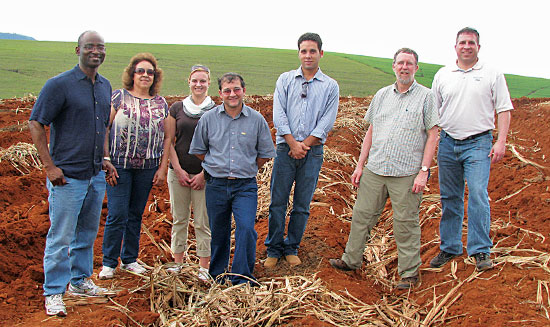
UD research is growing around the world. The Confucius Institute, recently launched in partnership with Xiamen University, is developing initiatives focusing on international issues and fostering economic scholarship and entrepreneurship, in addition to building interest regionally in the Chinese language and culture. UD and Xiamen University established the Joint Institute for Coastal Research and Management in 2008 and now offer a dual doctoral degree program in oceanography. In Latin America, a longstanding partnership in engineering research and education with 14 Colombian universities is being expanded to other UD departments, with the mutual goal to train 100 future Colombian faculty at the Ph.D. level over the next 10 years. And a partnership with the Federal University of Lavras (UFLA) in Brazil (shown below) will support undergraduate internships, build teaching modules for UD courses, and provide opportunities for as many as 12 doctoral students from UFLA to spend up to a year working with UD faculty on collaborative research in agriculture and biological science.